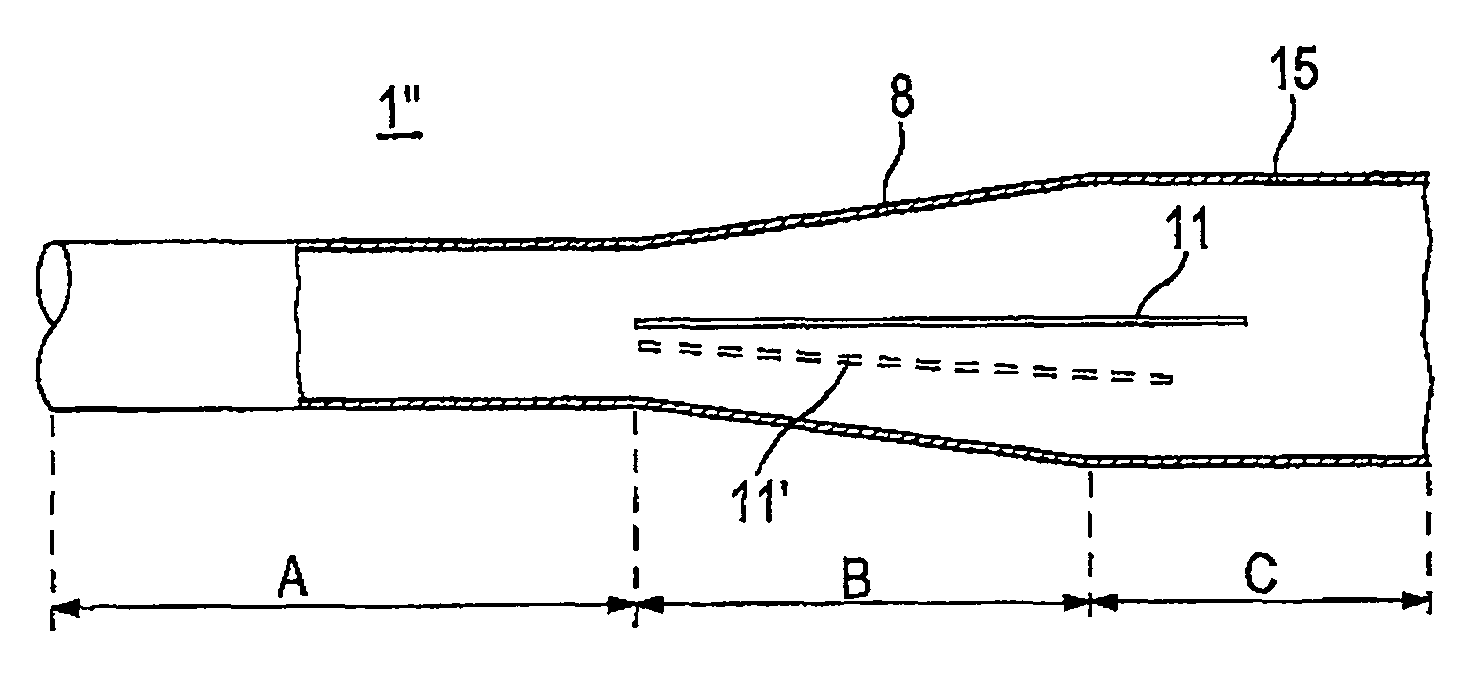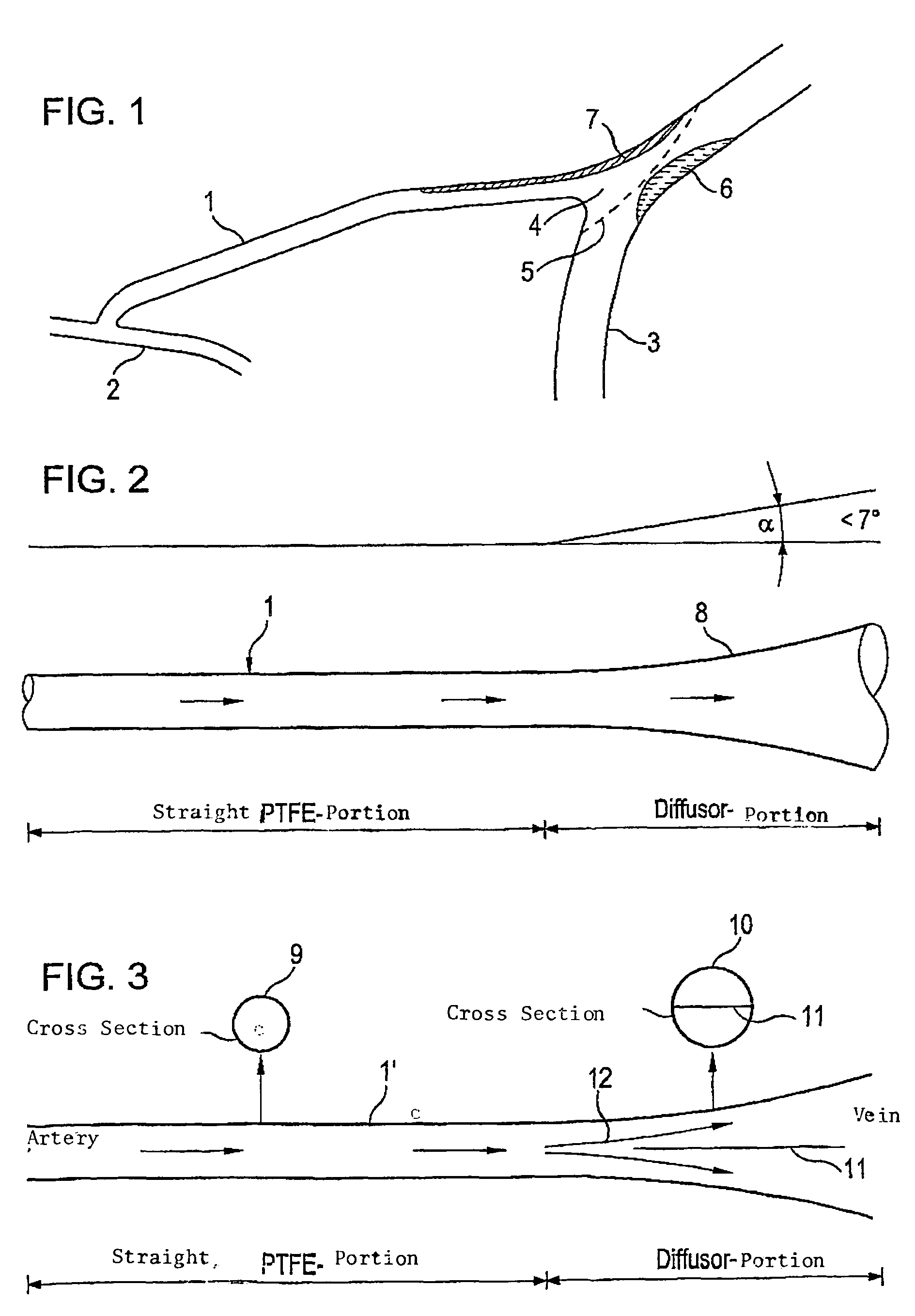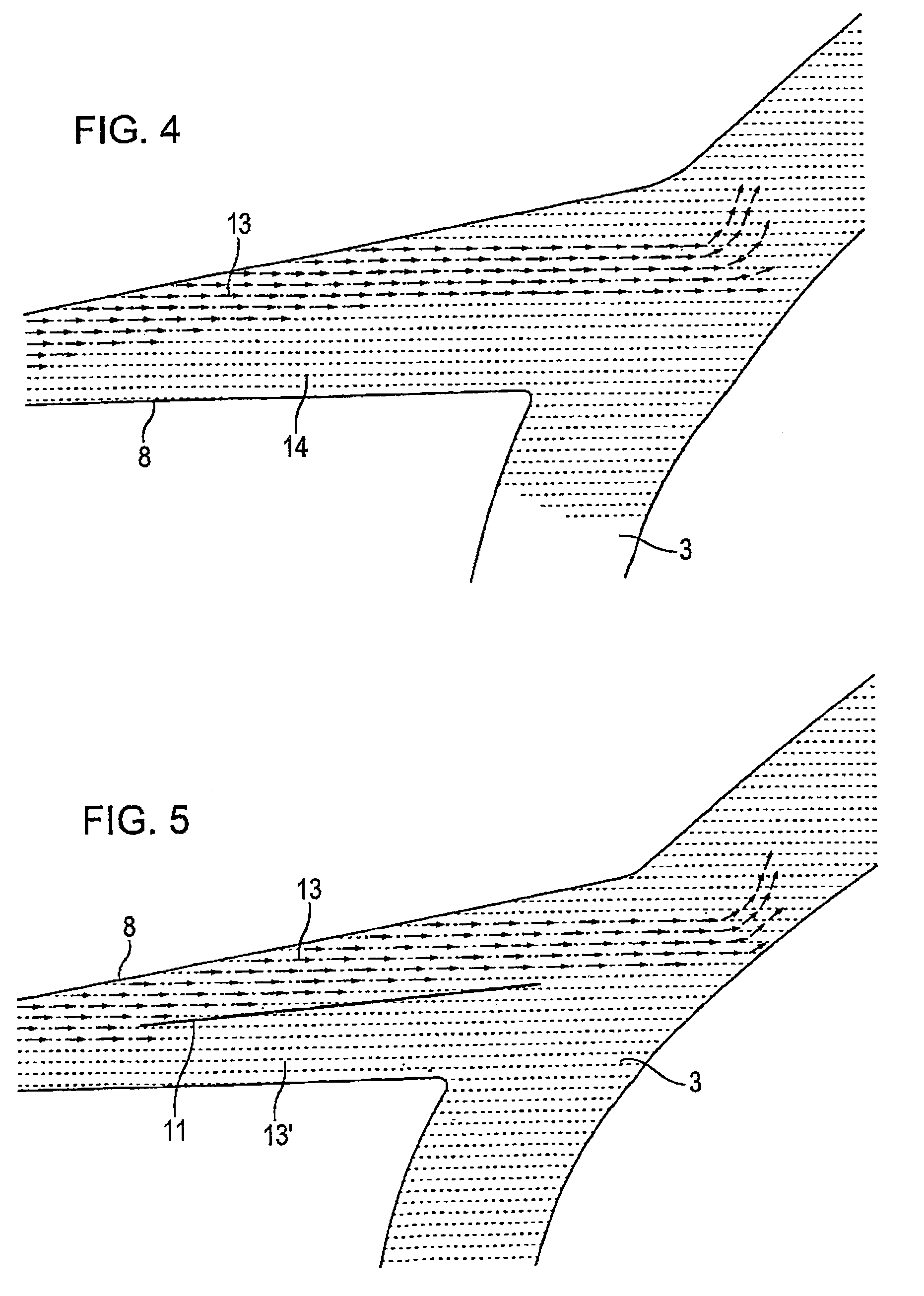Tubular vascular transplant
- Summary
- Abstract
- Description
- Claims
- Application Information
AI Technical Summary
Benefits of technology
Problems solved by technology
Method used
Image
Examples
Embodiment Construction
[0039]The preferred embodiments of the present invention will now be described with reference to FIGS. 1-8 of the drawings. Identical elements in the two figures are designated with the same reference numerals.
[0040]FIG. 1 shows an arteriovenous shunt that connects an artery 2 with a vein 3. Shunt 1 is a tubular vascular transplant made of ePTFE that diverts at its proximal end of the artery 2 and leads into vein 3 with primarily the same diameter whereby the connection between shunt 1 and the vein occurs via a flange 4. This is connected with vein 3 by a dash line suture 5. As explained previously, an intimal hyperplasia 6 is formed via an angular penetrated central blood flow at the base body of the vein which is released due to the high wall shear stress (WSS). Parallel to this pseudointimal hyperplasia 7 is formed in shunt 1 in the distal region which is primarily released by separation zones in the blood flow.
[0041]FIG. 2 shows a schematic part of an arteriovenous shunt 1 accor...
PUM
 Login to View More
Login to View More Abstract
Description
Claims
Application Information
 Login to View More
Login to View More - R&D
- Intellectual Property
- Life Sciences
- Materials
- Tech Scout
- Unparalleled Data Quality
- Higher Quality Content
- 60% Fewer Hallucinations
Browse by: Latest US Patents, China's latest patents, Technical Efficacy Thesaurus, Application Domain, Technology Topic, Popular Technical Reports.
© 2025 PatSnap. All rights reserved.Legal|Privacy policy|Modern Slavery Act Transparency Statement|Sitemap|About US| Contact US: help@patsnap.com



